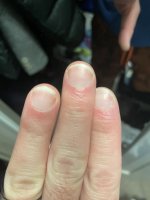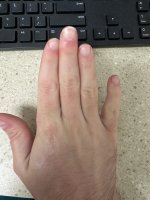- Messages
- 56
A LOW LEVEL OF OXYGEN IN THE MUSCLES
(TISSUE HYPOXIA)
IS THE MOST FREQUENT CAUSE OF:
CHRONIC FATIGUE,
POST-EXERTIONAL MALAISE
(PEM or PENE),
NON-RESTORATIVE SLEEP
(NRS),
MUSCULOSKELETAL STIFFNESS AND PAIN
WHEN WAKING UP
https://www.researchgate.net/publication/382042435

This occurs in
an important subgroup of patients with:
ME/CFS,
Fibromyalgia
Long COVID,
MIS-C,
Post-Vac Syndrome
Chronic Lyme, Babesia,
Bartonellosis,
EBV,
MCS,
POTS, Dysautonomia,
Stiff Person Syndrome,
Small Fiber Neuropathy (SNF),
EDS,
Mitochondrial Dysfunction,
Rheumatoid Arthritis,
Ankylosing Spondylitis or Spondyloarthritis,
Sjögren's,
Lupus, APS,
Other Autoimmune Diseases
and other chronic diseases.
(TISSUE HYPOXIA)
IS THE MOST FREQUENT CAUSE OF:
CHRONIC FATIGUE,
POST-EXERTIONAL MALAISE
(PEM or PENE),
NON-RESTORATIVE SLEEP
(NRS),
MUSCULOSKELETAL STIFFNESS AND PAIN
WHEN WAKING UP
https://www.researchgate.net/publication/382042435
This occurs in
an important subgroup of patients with:
ME/CFS,
Fibromyalgia
Long COVID,
MIS-C,
Post-Vac Syndrome
Chronic Lyme, Babesia,
Bartonellosis,
EBV,
MCS,
POTS, Dysautonomia,
Stiff Person Syndrome,
Small Fiber Neuropathy (SNF),
EDS,
Mitochondrial Dysfunction,
Rheumatoid Arthritis,
Ankylosing Spondylitis or Spondyloarthritis,
Sjögren's,
Lupus, APS,
Other Autoimmune Diseases
and other chronic diseases.
Last edited:



